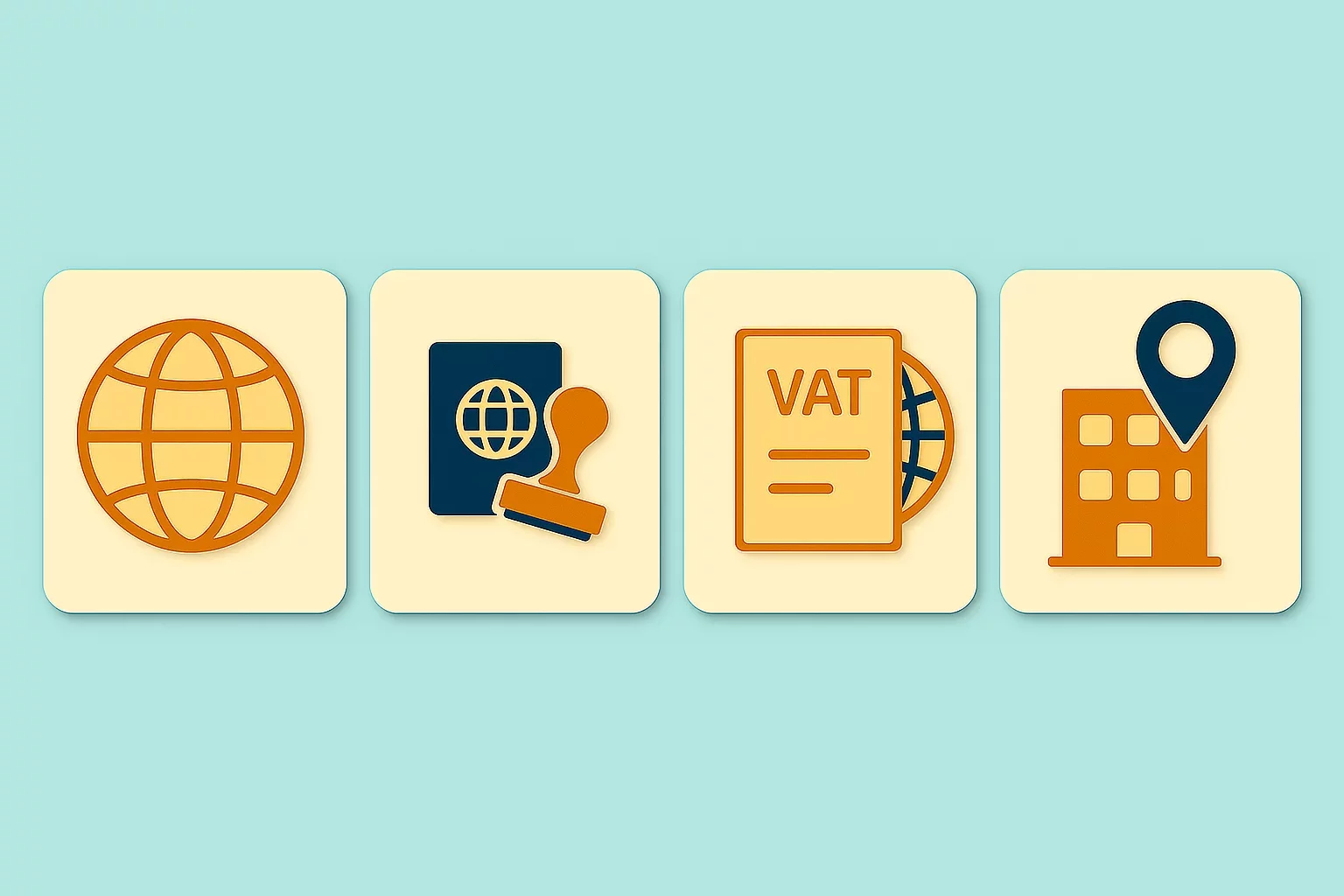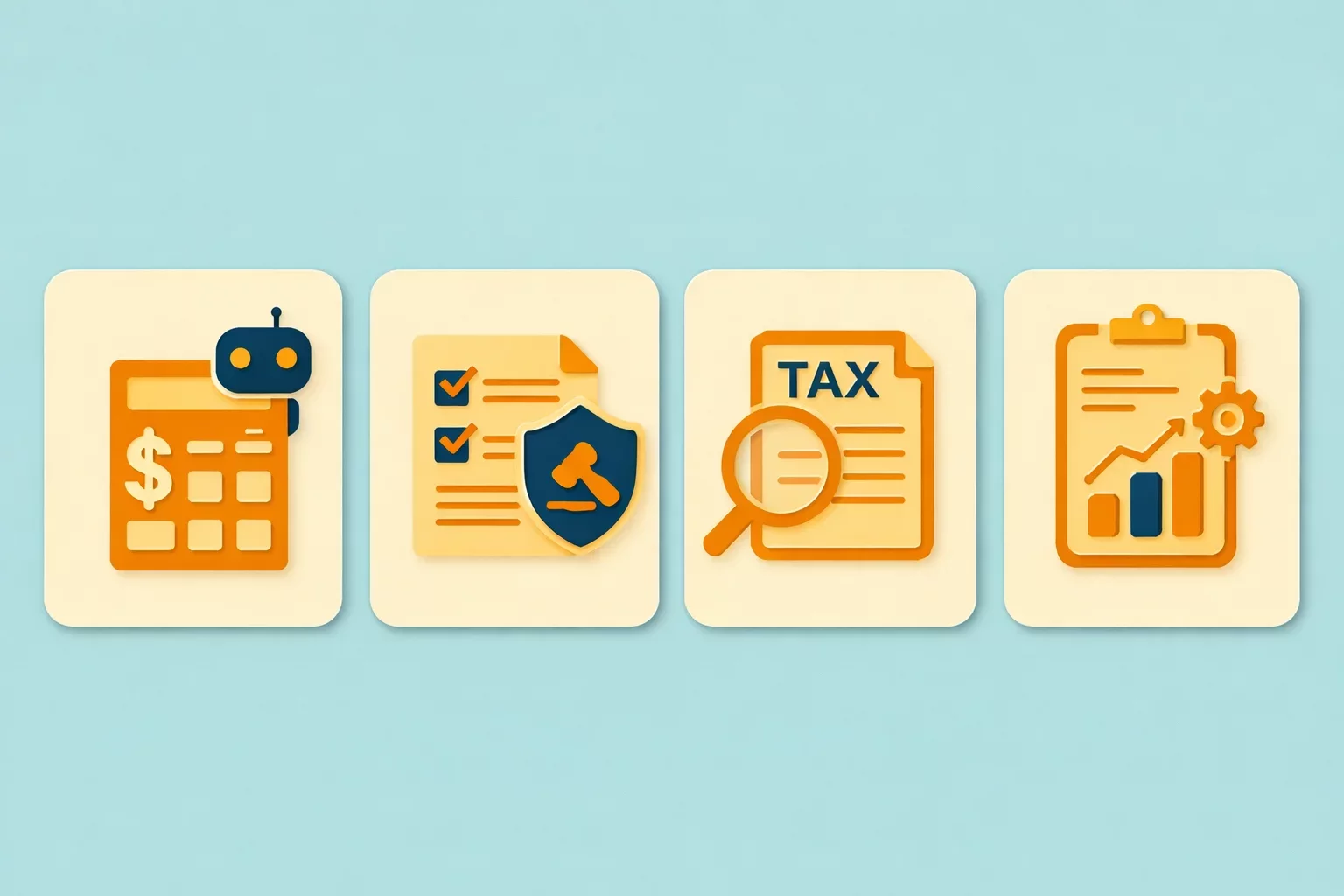How to Register for VAT Internationally in 7 Steps

Fines and shipping delays. Lost sales. Missed deadlines. These are just some of the problems businesses run into when they skip proper VAT registration or get tripped up by different rules in each country. Globally, companies must comply with local VAT laws before making sales. VAT isn’t just a box to check—getting it wrong can put your revenue, reputation, and plans to expand at risk. If you’re selling across borders, you might already know the stress that comes with endless paperwork and confusing requirements.
This guide cuts through the confusion. With easy steps, real tips, and up-to-date advice, you’ll be able to register for VAT in any country without feeling lost or overwhelmed (How to Get a VAT Number Guide). In this guide, you'll learn how to:
Figure out if your business needs to register for VAT — and when
Gather the right documents every country asks for
Fill out the forms and avoid common mistakes
Appoint a local representative if you need one
Get your VAT number and stay compliant from day one
By the end, you’ll know which steps matter most, what to watch out for, and how to handle VAT registration quickly and correctly.
Step #1: Determine If You Need to Register for VAT
The first task is to see if your business must register for VAT in the country where you plan to sell. Requirements can change depending on your sales or your business type. For example, in the EU, you usually need to register if your yearly B2C sales go over €10,000.
Always check the rules before your first sale. Even casual or one-off sales can trigger registration. This is especially true for non-resident or non-EU businesses, which often face immediate VAT obligations, regardless of how much they sell. Ignoring these triggers can lead to fines and blocked shipments.
Here’s a quick comparison to show just how different VAT thresholds can be:
Country | Threshold for VAT Registration | Non-Resident Rule |
|---|---|---|
Germany | €0 (immediate for non-EU) | Registration always required |
France | €35,000 (distance sales) | No threshold for non-residents |
UK | £90,000 (local sales) | Immediate for non-UK sellers |
Italy | €35,000 (distance sales) | Must register if selling goods |
The reality: No two countries are totally alike. Always double-check before launching. For current thresholds, take a look at guides on our Resources collection.
For an in-depth overview of registration requirements and threshold changes across Europe and globally, our Complete Guide to VAT Registration and Compliance offers country-by-country explanations and current regulatory updates.
Step #2: Gather All Required Documentation
Now, start gathering your paperwork. No way around it — every country wants different documents, often with their own twists. You’ll usually need:
Business registration certificate and articles of association
Extract from the business registry
Identification for key company representatives
Proof of business activities and address
Some countries require translations or notarizations. France, Spain, and Italy are just a few examples that may insist on translated documents or certified copies. We at VATabout have seen applications bounce back just because a signature was on the wrong side of the page. Handle paperwork like a pro by checking exact requirements on the local tax authority’s website.
Step #3: Complete Local Registration Forms and Power of Attorney
Every application calls for official forms — usually found on the country’s tax authority site and, yes, almost always in the local language. If you use a local expert or agent, you’ll need to sign a Power of Attorney to let them file on your behalf.
Accuracy is everything. The smallest typo can set you back weeks. Before you submit, set aside time to review every name, date, and number. “We once had a client delayed in Poland for two months because of one wrong digit in their company number.”
When forms seem confusing, many business owners seek help from a local trusted tax advisor. It’s easy to overlook details when you’re working in a language you don’t speak.
Step #4: Appoint a Fiscal Representative (If Needed)
Countries like Italy, France, and Spain demand that non-resident companies appoint a fiscal representative. This is someone local who is jointly responsible for your VAT compliance. Choosing the right rep is more than bureaucracy — it can smooth out language or procedural barriers that otherwise slow you down.
Not sure if you need one? If you’re selling into the EU as a non-EU business, countries make this step mandatory. Get a local expert with experience in VATabout’s approach: select someone with a good reputation and proven track record handling foreign businesses.
Step #5: Submit Your VAT Registration Application
With paperwork in order, it’s time to apply. Some places, like the UK or the Netherlands, love their online portals. Others, like Germany, may want you to send forms by post.
Don’t submit until you’ve reviewed every document for accuracy and completeness. It only takes a missing address or unsigned page for your application to be sent back. In our experience, being systematic here saves weeks of headaches.
Double-check country-specific submission rules.
Track your application — take screenshots or keep postal receipts.
If possible, file online for faster confirmation.
Some countries even offer same-day VAT numbers if everything is in order, while others take longer.
Step #6: Respond to Tax Authority Inquiries and Await Confirmation
Now, the waiting begins. Processing your VAT registration can take anywhere from four to eight weeks, depending on the country and its workload. Tax authorities may reach out for more details or missing documents — usually by email or post.
Respond quickly to any follow-up requests. Delays in your reply mean delays in your approval. As the old tax office saying goes, “He who waits, waits longer.” We’ve found that keeping a log of conversations and documents saves time if authorities come back with questions.
Here’s a practical tip:
Organize all correspondence in one folder (physical or digital).
Set calendar reminders to chase updates if you haven’t heard back in two weeks.
According to recent stats, the average wait for a VAT number in Europe is about six weeks, but fast responses can speed this up significantly.
Step #7: Receive Your VAT Number and Start Complying
Finally, the big moment. Once you get your VAT number, you are officially allowed to start collecting and remitting VAT in your target country. Update your invoices right away—show the new VAT number for every sale.
Your responsibilities don’t stop here. You’ll need to
File regular VAT returns, following the country’s exact rules
Keep detailed records of sales, purchases, and VAT paid
Stay aware of local deadlines and law changes
For many businesses, the work is just beginning. But with good systems and reminders, VAT compliance quickly becomes just another part of your business routine.
For a practical comparison of the international VAT process, see our Complete Guide to VAT Registration and Compliance, which details post-registration responsibilities and helpful tips for compliance success.
Best Practices for Smooth International VAT Registration
Getting international VAT registration right can save your business time, money, and stress. The good news? Following proven steps keeps you ahead of mistakes and ensures you meet every country’s compliance needs. Here’s what works best, straight from years of real-world experience at VATabout.
Double-Check Each Country’s VAT Thresholds Before Selling
Every country sets its own VAT registration rules. Some let you sell a certain amount before you need to register, while others want you registered from day one, especially if you’re based abroad. We’ve seen new sellers get burned by assuming EU limits are the same everywhere. Always check local thresholds and rules before your first sale. For example, the EU requires registration if your cross-border sales top €10,000, but some countries require it sooner if you’re not local. An up-to-date summary can be found in guides like Stripe’s International VAT Number Requirements.
Keep Digital Copies of All VAT Registration Documents
Losing paperwork is easier than you think — especially when juggling different countries, each with their own demands. We keep a secure digital folder for every VAT registration our team manages. This means scanned versions of registration certificates, IDs, proof of address, and translations if needed. If authorities ever request more info, you’re just a click away from sending what they need.
Use Official Government Portals for Every VAT Application
Scam websites for VAT are everywhere and outdated forms waste weeks. Always use the official government portal or tax office site when you fill out and file your VAT registration. In the UK, for example, you apply at the official HMRC site, and most EU countries now use secure government portals too. It pays to stay official.
Appoint a Fiscal Representative in Tricky Countries
Some countries require a fiscal representative for non-local businesses. Even when it isn’t a must, naming a local expert can give you peace of mind, especially in places with odd paperwork, strict deadlines, or language barriers. At VATabout, we’ve seen fiscal reps smooth things out with local offices, help with translations, and speed up the registration process. If you’re uncertain about a new market, a local representative will be worth it.
Respond Fast to Tax Authority Requests to Avoid Delays
After you apply, it’s normal for tax authorities to reach out for more details or missing paperwork. Don’t wait. Keep all correspondence in one spot and set up calendar reminders to check for updates. Our own process? We respond within one business day to anything from the tax office. Fast action keeps your application on track and, according to the data, can even knock weeks off your wait time for a VAT number.
Organize All VAT Invoices and Records from Day One
Don’t let invoices pile up in a shoebox — keeping everything organized from the start is key. You’ll need detailed records for all sales, purchases, and VAT paid, and most countries ask for regular returns. At VATabout, we always set up a folder structure and simple spreadsheet as soon as a new VAT number arrives. This habit saves hours during audits and helps you spot issues before they grow.
When in Doubt, Consult a VAT Compliance Expert
Multi-country VAT can be a maze, with subtle rules that shift without notice. If you’re handling high volumes, entering new regions, or facing complex chains of supply, get a professional involved early. A specialist can spot risks, prevent fines, and often recommend the best way to structure your cross-border sales. We get lots of calls from businesses in trouble after they tried to DIY —usually after a fine or a missed deadline. Pro tip: it’s easier and cheaper to ask for help before you commit to a new market.
These best practices make VAT registration much smoother and set you up for long-term success.
Final Thoughts
Following these seven steps helps you register for VAT correctly in any country and avoid costly mistakes. Checking local rules, preparing your documents, and responding quickly to tax offices means less stress and smoother sales. When you take VAT compliance seriously, your business is safer, and you’re free to grow across borders. VATabout is here to support you every step of the way.

Featured Insights

Angola’s E-Invoicing Mandate: Phased Implementation Continues Into 2026
🕝 December 10, 2025
VAT Deduction and Business Succession: When Do Advisory Costs Serve the Company’s Interest?
🕝 December 8, 2025
Europe’s Plastic Fiscal Shift: Why Italy’s Plastic Tax Now Starts in 2027
🕝 December 3, 2025
The Decline of Low-Value Import Exemptions: Closing Gaps in Cross-Border E-Commerce
🕝 November 20, 2025More News from World
Get real-time updates and developments from around the world, keeping you informed and prepared.
-e9lcpxl5nq.webp)























-7xdqdopxl6.webp)



-a9bz8kz2cs.webp)































